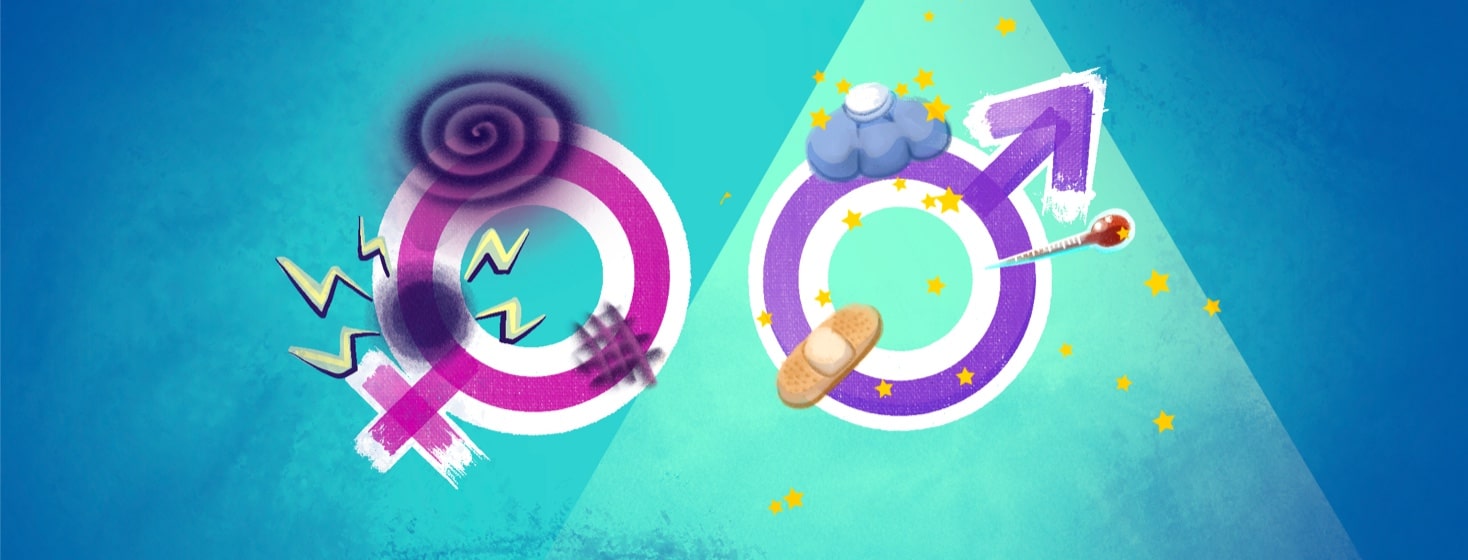Women With Non-Radiographic Axial Spondyloarthritis
Ankylosing spondylitis and non-radiographic axial spondyloarthritis are two types of the same disease. Diagnosis with one or the other depends on a person's symptoms. It also depends on how much spinal involvement is seen on imaging tests. Both are autoimmune diseases that have shown clear differences in how they present in men versus women.1
Ankylosing spondylitis was initially recognized in mostly male patients and largely seen as a “man’s disease” when the condition was first diagnosed. In recent years, women have more frequently been diagnosed with this condition. However, they may present with different symptoms than men. This may be due to the effects of hormones such as estrogen, as well as genetic differences.1
Delay in diagnosis
Several research studies have shown that men tend to have a 3-to-5-year delay in their diagnosis, whereas women may have a 10-to-14-year delay in their diagnosis of non-radiographic axial spondyloarthritis (nr-AxSpa) or ankylosing spondylitis. This may be due to the fact that women generally take a longer period of time to progress from the non-radiographic type to having joint and spinal damage that is detectable on imaging such as x-rays and MRIs.
Overall, women tend to have less noticeable changes identified in the sacroiliac joints and in the spine. On the other hand, men typically have more spinal damage on imaging tests, such as syndesmophytes (bony growths), and the damage is identified earlier on.2
Clinical differences
Women were more likely to have pain in less classic locations such as the neck or the peripheral joints (such as the hands, shoulders, or feet) compared to men. They are also more likely to have pain from enthesitis, which is tenderness and inflammation of the insertion tendon insertion sites, or dactylitis, which is swelling of entire finger or toe along the length of a tendon. 2
Women are also less likely to have involvement of the thoracic and lumbar spine on imaging studies compared to men. For this reason, one study showed that a lot of women were initially misdiagnosed to have seronegative rheumatoid arthritis before their diagnosis was eventually recognized to be ankylosing spondylitis.2
Functional impairment
Based on studies and surveys, women with nr-AxSpa and AS report a worse quality of life and more severe life impact compared to men. Due to greater involvement of peripheral joints, as well as a higher degree of enthesitis and dactylitis, women often reported that their pain was more widespread.
A higher prevalence of fibromyalgia, neuropathic pain, chronic fatigue syndrome, depression, and anxiety was also seen in women with spondyloarthritis. Women were more likely than men to have comorbidities such as inflammatory bowel disease and plaque psoriasis.3
Response to treatment
Studies of lab markers in men and women with nr-AxSpa and AS showed that men tend to have higher levels of interleukin-17 and TNF-alpha, which are two key players in the inflammation and damage of the spine. Several studies showed that women tend to have less of a clinical response to TNF inhibitors, which are a class of biologics approved to treat AS. Unfortunately, women reported less of an improvement in back pain, joint pain, and overall functioning compared to men after treatment with a TNF inhibitor.4
Additional studies are needed to determine further differences between men and women with nr-AxSpa and AS, and to find a way to make more of a timely diagnosis in both groups suffering from this condition. Further research is also needed to find the best treatments for both men and women, taking unique clinical differences of each group in mind.

Join the conversation